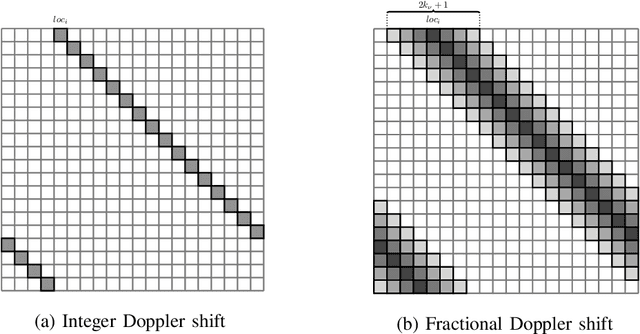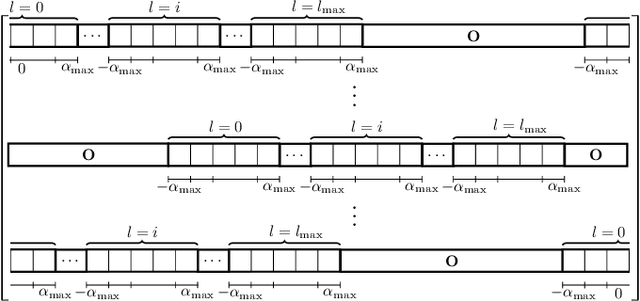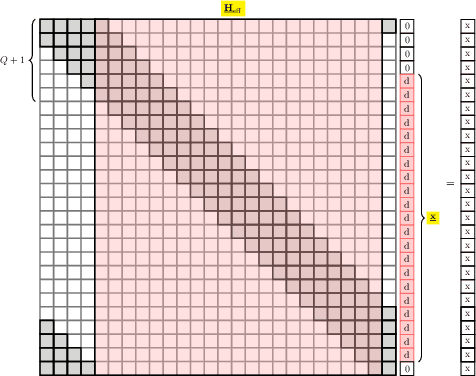Ali Bemani
Affine Frequency Division Multiplexing: Extending OFDM for Scenario-Flexibility and Resilience
Feb 07, 2025



Abstract:Next-generation wireless networks are conceived to provide reliable and high-data-rate communication services for diverse scenarios, such as vehicle-to-vehicle, unmanned aerial vehicles, and satellite networks. The severe Doppler spreads in the underlying time-varying channels induce destructive inter-carrier interference (ICI) in the extensively adopted orthogonal frequency division multiplexing (OFDM) waveform, leading to severe performance degradation. This calls for a new air interface design that can accommodate the severe delay-Doppler spreads in highly dynamic channels while possessing sufficient flexibility to cater to various applications. This article provides a comprehensive overview of a promising chirp-based waveform named affine frequency division multiplexing (AFDM). It is featured with two tunable parameters and achieves optimal diversity order in doubly dispersive channels (DDC). We study the fundamental principle of AFDM, illustrating its intrinsic suitability for DDC. Based on that, several potential applications of AFDM are explored. Furthermore, the major challenges and the corresponding solutions of AFDM are presented, followed by several future research directions. Finally, we draw some instructive conclusions about AFDM, hoping to provide useful inspiration for its development.
Integrated Sensing and Communications with Affine Frequency Division Multiplexing
Feb 26, 2024Abstract:Integrated sensing and communications (ISAC) is regarded as a key technology in next-generation (6G) mobile communication systems. Affine frequency division multiplexing (AFDM) is a recently proposed waveform that achieves optimal diversity gain in high mobility scenarios and has appealing properties in high-frequency communication. In this letter, we present an AFDM-based ISAC system. We first show that in order to identify all delay and Doppler components associated with the propagation medium, either the full AFDM signal or only its pilot part consisting of one discrete affine Fourier transform (DAFT) domain symbol and its guard interval can be used. Our results show that using one pilot symbol achieves almost the same sensing performance as using the entire AFDM frame. Furthermore, due to the chirp nature of AFDM, sensing with one pilot provides a unique feature allowing for simple self-interference cancellation, thus avoiding the need for expensive full duplex methods.
Affine Frequency Division Multiplexing for Next Generation Wireless Communications
May 03, 2022



Abstract:Affine Frequency Division Multiplexing (AFDM), a new chirp-based multicarrier waveform for high mobility communications, is introduced here. AFDM is based on discrete affine Fourier transform (DAFT), a generalization of discrete Fourier transform, which is characterized by two parameters that can be adapted to better cope with doubly dispersive channels. First, we derive the explicit input-output relation in the DAFT domain showing the effect of AFDM parameters in the input-output relation. Second, we show how the DAFT parameters underlying AFDM have to be set so that the resulting DAFT domain impulse response conveys a full delay-Doppler representation of the channel. Then, we show analytically that AFDM can achieve full diversity in doubly dispersive channels, where full diversity refers to the number of multipath components separable in either the delay or the Doppler domain, due to its full delay-Doppler representation. Furthermore, we present a low complexity detection method taking advantage of zero-padding. We also propose an embedded pilot-aided channel estimation scheme for AFDM, in which both channel estimation and data detection are performed within the same AFDM frame. Finally, simulations corroborate the validity of our analytical results and show the significant performance gains of AFDM over state-of-the-art multicarrier schemes in high mobility scenarios.
Low complexity equalization for AFDM in doubly dispersive channels
Mar 07, 2022



Abstract:Affine Frequency Division Multiplexing (AFDM), which is based on discrete affine Fourier transform (DAFT), has recently been proposed for reliable communication in high-mobility scenarios. Two low complexity detectors for AFDM are introduced here. Approximating the channel matrix as a band matrix via placing null symbols in the AFDM frame in the DAFT domain, a low complexity MMSE detection is proposed by means of the $\rm{LDL}$ factorization. Furthermore, exploiting the sparsity of the channel matrix, we propose a low complexity iterative decision feedback equalizer (DFE) based on weighted maximal ratio combining (MRC), which extracts and combines the received multipath components of the transmitted symbols in the DAFT domain. Simulation results show that the proposed detectors have similar performance, while weighted MRC-based DFE has lower complexity than band-matrix-approximation LMMSE when the channel impulse response has gaps.
 Add to Chrome
Add to Chrome Add to Firefox
Add to Firefox Add to Edge
Add to Edge